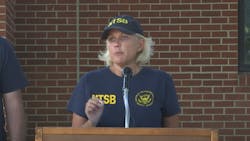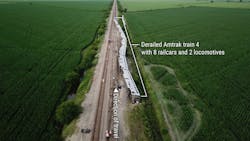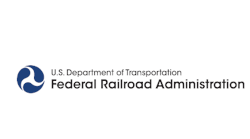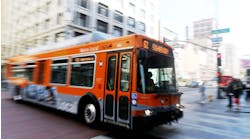The National Transportation Safety Board (NTSB) issued final reports this week on two fatal Amtrak accidents that took place in 2021 and 2022. The probable cause of both incidents included human factors and engineering related issues outside of Amtrak’s control. However, the final reports also include recommendations to the Federal Railroad Administration (FRA) meant to improve occupant protections of passenger vehicles.
2021: Joplin, Montana
Amtrak’s westbound Empire Builder derailed Sept. 25, 2021, while in a right-hand curve on BNSF-owned track. The accident resulted in three deaths and 49 injuries.
NTSB determined a combination of factors led to the derailment, including worn rail, vertical track deflection, subgrade instability and track misalignment. NTSB noted worn rail needs to be replaced before the flange of a train wheel contacts the top of a rail joint bar. Excessive wheel flange contact can lead to increased wear and tear on the wheel and rail. Established rail wear limit regulations would have required replacement of the worn rail before wheel flanges contacted a four-bolt joint bar, investigators said. NTSB investigators also noted walking inspections are important to ensure an understanding of track conditions and that the track inspector’s workload likely prevented him from performing a timely walking inspection of the track in the area of the derailment.
NTSB recommended all Class 1 and intercity trains operating on main tracks be equipped with a technology-based monitoring system to detect track defects. The board also recommended BNSF complete a thorough evaluation of the derailment curve to look for the cause of instability in the subgrade and make appropriate repairs. Additionally, NTSB made recommendations to FRA that included a requirement to place limits for rail head wear, require regulations on replacement rail joints be applied to all rail joints in continuously welded rail with no exceptions and implement a process where certain alerts from vehicle/track interaction devices automatically trigger a slow order that remains in place until an inspection is completed and the issue remediated.
“This tragedy is a powerful reminder that there’s no substitute for robust track inspection practices, which can prevent derailments by identifying track conditions that may deteriorate over time,” said NTSB Chair Jennifer Homendy. “I implore track owners, who are responsible for the safety of their routes, to ensure inspectors have the time, support and resources needed to do their work, which is essential to rail safety.”
2022: Mendon, Missouri
Amtrak Train 4 derailed June 27, 2022, after striking a dump truck as the truck crossed over rail tracks at a passive crossing without stopping at a stop sign and crossbucks. The accident resulted in 146 injuries and four deaths, including the truck driver and three train passengers.
The crossing involved in the 2022 incident has been closed. Chillicothe, Mo., in collaboration with the Missouri Department of Transportation and Chariton County, has developed a plan to close several other passive crossings and redesign local roads to direct traffic through active crossings. The Missouri Department of Transportation will use a portion of the funds out of its latest budget signed by Missouri Gov. Mike Parson to address passive grade crossings.
“The safest rail grade crossing is no rail grade crossing, but at the very least, every road-rail intersection should have an adequate design to ensure proper visibility so drivers can see oncoming trains,” said Chair Homendy. “Communities across the country deserve safer crossings so these types of accidents don’t happen again.”
Occupant safety standards
Both incidents raised concerns about occupant safety standards of passenger cars. In the Joplin, Mont., incident, NTSB noted the severity of the injuries was due to the failure of some windows to stay in place when cars rolled over during the derailment sequence. The board said performance standards for window retention systems are needed to prevent passenger ejections. Investigators also found that the use of compartmentalization in Amtrak’s passenger railcars did not adequately protect passengers from injury during the derailment.
NTSB noted in its final report of the Mendon, Mo., incident that ballast and soil had accumulated where lower-level windows and a door had dislodged. The location of the door failure was in a vestibule where two of the passenger fatalities occurred.
NTSB reiterated three safety recommendations it had previously made to FRA concerning occupant safety in the final report of the Joplin, Mont., incident and made reference to the recommendations in the final report of the Mendon, Mo., incident. Those recommendations include the development of a performance standard to ensure that windows (e.g., glazing, gaskets and any retention hardware) are retained in the window opening structure during an accident, conducting research to evaluate the causes of passenger injuries in passenger railcar derailments and overturns and evaluate potential methods for mitigating those injuries and identifying safety improvements, using the findings to develop occupant protection standards for passenger railcars to mitigate passenger injuries likely to occur during derailments and overturns.
The final report of the Mendon, Mo., accident and the Joplin, Mont., accident are available on NTSB's website.






